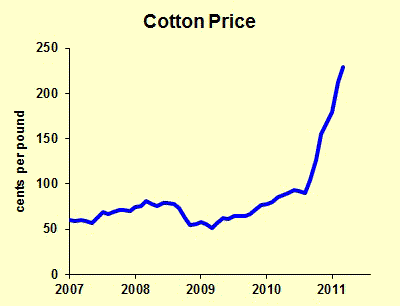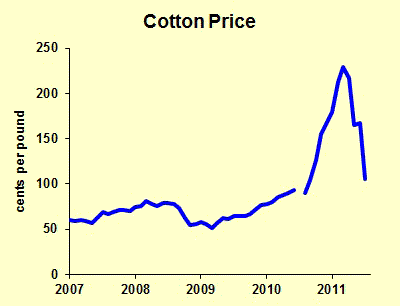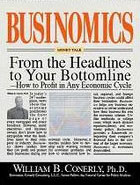So what did you think of cotton back in April? If you had charted its price, here’s what you would have seen:

Wow! Isn’t that pretty certainly the next sure thing? It’s going through the roof. Let’s buy some cotton futures. China is becoming the world’s largest consumer of cotton, and their economy continues to grow. Production has dropped recently–maybe we should think about “peak cotton,” as we thought of peak oil.
That chart shows data through March of this year. Let’s update with the most recent information:

Oops. What happened? Supply and demand.
One reason for commodity price run-ups such as cotton’s rise is that demand can usually rise faster than supply can increase. Demand is the hare. Supply is the tortoise. But how long does it take to increase supply? For many agricultural commodities, about one growing season. It will be longer for tree fruits and grapes, but field crops acreage can increase fairly quickly.
Other commodities have longer supply time lags. Many metals take several years to get new mines and smelters running. Oil probably has the longest time lag, as increased production requires seismic studies, drilling, laying pipelines and finally adding refinery capacity. Supply will eventually increase, but it takes a while.
For agricultural commodities, remember that harvests vary with weather conditions and pests and blight. It’s not unusual to have a very bad year of output, with production fully recovering the following year.
Whenver I see a commodity price spike, I anticipate a price decline. I may not be sure whether the price will rise higher before the fall, or exactly when the fall will occur, but pretty much any sharp commodity price hike will be followed by a decline.
- Bulenox: Get 45% to 91% OFF ... Use Discount Code: UNO
- Risk Our Money Not Yours | Get 50% to 90% OFF ... Use Discount Code: MMBVBKSM
Disclaimer: This page contains affiliate links. If you choose to make a purchase after clicking a link, we may receive a commission at no additional cost to you. Thank you for your support!



Leave a Reply